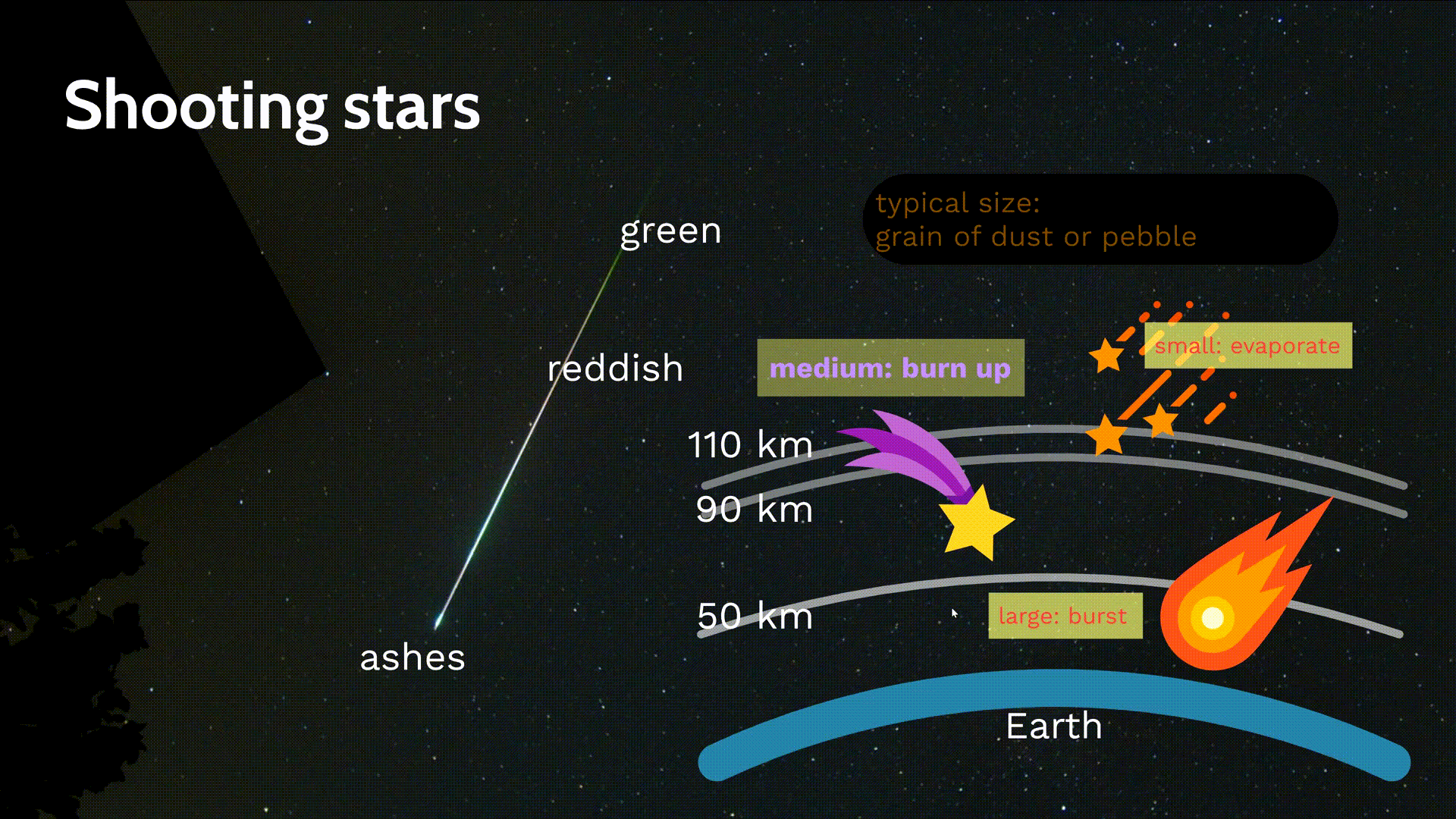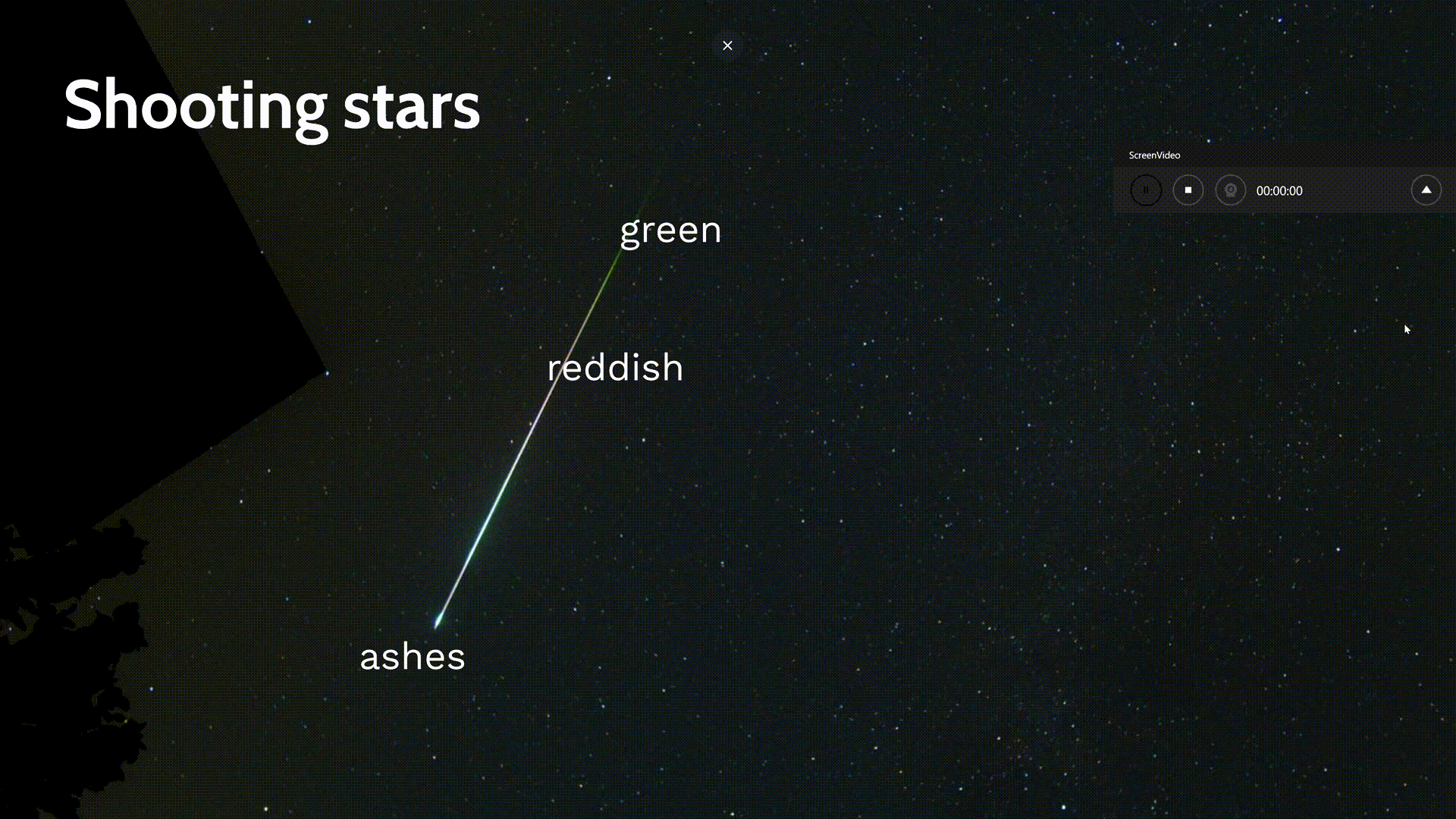
Climate, Weather and Health
History meets Science
Meteorology Beyond Borders
Meteors and Climate
Meteors - also called "shooting stars" - are formed in high layers of the Earth's atmosphere when particles from space enter.
In principle, they don't have anything to do with climate: They occur in very high layers of the atmosphere, high above the weather clouds, and cannot influence the clouds.
However, there are "meteor showers" caused by streams of particles in the solar system. As the interplanetary material in the solar system is caused by comets whose trails intersect the orbit of the Earth, the Earth hits these "clouds of higher particle density" in the solar system always at the same season or even: at the same days of our modern (Roman) calendar.
As ancient calendars prior to the Julian (Roman) one shifted a lot more, meteor showers did not occur always at the same days of these historical calendars (e.g. the Greek ones, the Babylonian, the Egyptian, the Jewish calendars). So, the calendar dates for meteor showers were not always the same but in case they always occur with the same seasonal weather phenomenon, they can also seem to be connected to the weather.

Comets leave a lot of material alongside their trails. The earth's path intersects the trails of comets causing the Earth crossing through these clouds of particles always at the same time of the (modern) year.
Shooting stars do not influence the weather but meteor showers always occur simultaneously with a specific (seasonal) weather.
Meteors: Modern Description

Always and everywhere in the solar system, there are interplanetary small particles. Their sizes vary from grains of dust to some meters in diametre. As the Earth orbits the Sun, it always hits some of these small particles. As the speed of hte Earth is roughly 30 km/ s, the relative speed of these particles entering the Earth's atmosphere is at least 30 and (depending on their initial speed in space) up to 70 km/s.
Due to this speeed, the friction of the particle with the molecules in the atmosphere heats up and ionizes the air locally around the particle's trail. The molecules immediately recombine and emit the energy as light. The observer on Earth then sees glowing air (and not the tiny particle therein). Depending on the height of the phenomenon, different sorts of molecules are ionized causing different energy levels emitting light and therefore different colours of the appearance throughout the path of the particle.
How do meteors look like
This video shows an impressing meteor where not only the various colours can be observed but it is also visible how the hot air is subsequently distributed in the atmosphere.
(all credits given in the video: thank you.)
Comets!
... have nothing to do with weather and climate.
... and now for something completely different.
Comets look differently in the sky: They seem to stand still during one night and their motion is only visible within a few days.
Comets are of different nature:
Their distances are farther than the Moon and not in the Earth's atmosphere. Their sizes range in the order of kilometres and they travel from the outer solar system to the inner one, orbitting the Sun on elliptic, parabolic or hyperbolic orbits..

Comet NEOWISE above Jena (SMH 2020).